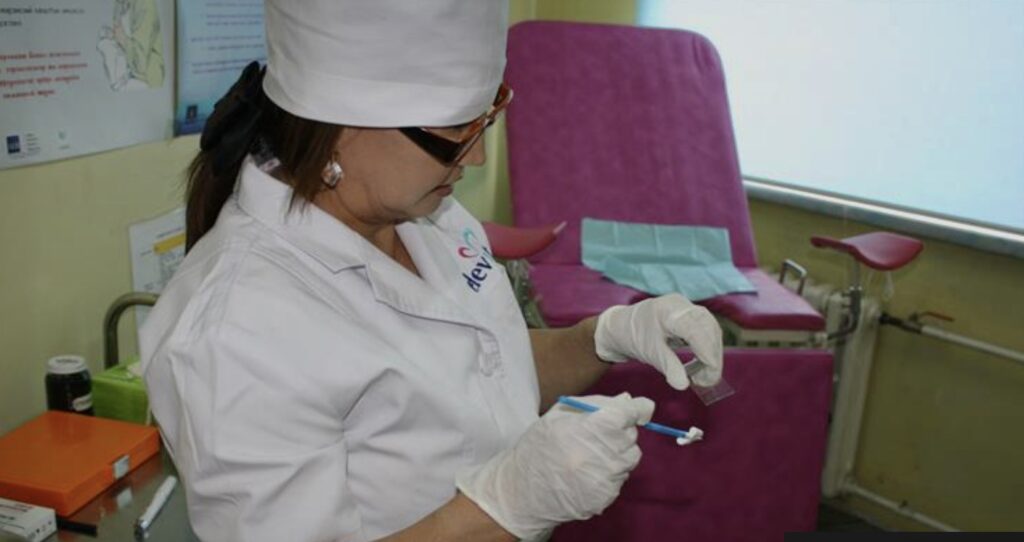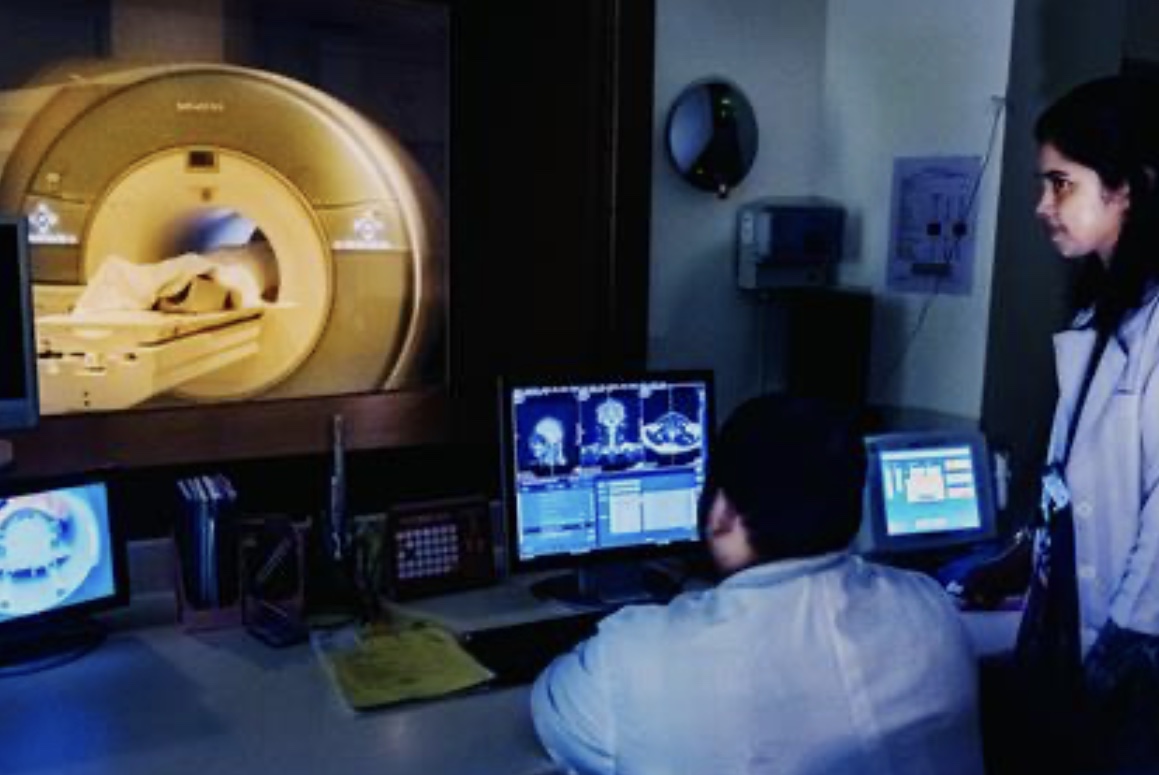Text by Henrylito D. Tacio
Photos: WHO
Filipino women are afraid of breast cancer because they think it is a death sentence once they are diagnosed with it. But what they don’t know is that the second most common form of cancer that strikes them, which is cervical cancer, is preventable as there is already a vaccine against it.
There is nothing more tragic than suffering and dying from a disease that is preventable through vaccination. The World Health Organization (WHO) is recommending vaccination to those between the ages of 9 and 14.
Prevention of cervical cancer should start early – before girls are exposed to human papillomavirus (HPV). “The vaccine provides up to 95% coverage against cervical cancer,” Dr. Chia Yin Nin, a gynecologic oncologist practicing at Gleneagles Hospital in Singapore, told Business World.
Cervical cancer is the second leading cancer site among women, the Department of Health (DOH) reports. Every year, an estimated 7,277 new cases are reported, with 3,087 deaths. In recent years, however, more cases and more deaths are being reported.
The cervix is part of the female reproductive system located at the junction of the vagina and the uterus (womb). It is often called the neck of the womb. “Generally, all women who have had sexual intercourse are at risk of cervical cancer,” DOH states. “However, rare types of cervical cancer can occur even in women who never had any sexual intercourse in their life.”
In recent years, however, there had been overwhelming evidence that HPV causes cancer of the cervix. HPV takes several forms, which are referred to by number. “There are about 100 types of HPV that generally infect people in various parts of the body but there are only 13 types that can cause cancer in the cervix,” wrote Dr. Cecilia Ladines-Llave in a paper presented at the Global Conference on Low-Resource Setting Cervical Cancer Prevention held at the Johns Hopkins University.
The most common causes of cervical cancer are HPV types 16 and 18. These two types are responsible for 70 percent of cervical cancer around the world. HPV Type 16 also causes oropharyngeal cancer. Condoms do not fully protect against infection because the virus can exist throughout the genital area and around the anus.
“We realize that, although HPV is sexually transmitted, it is not a sexually transmitted disease,” Dr. Nin explained. “It can be acquired through personal contact like fondling, petting and sexual intercourse.”
The following had been established as possible causes of cervical cancer: have had multiple sexual partners, have had sexual partners (regular or casual) who themselves had several sexual partners, have had a sexual partner who is infected with HPV, and had first sexual intercourse at a very early age, possibly 15 or 16 years old.

Rina Jimenez-David, a recognized advocate in reproductive health, assures: “It doesn’t necessarily mean that you’ve been sexually promiscuous (or a prostitute!) if you should develop cervical cancer. Even if you’ve been monogamous, your partner may not have been, and even just a single encounter with an infected partner could end up infecting him with HPV which he in turn could pass on to you. Remember, while HPV does not generally affect the health of a man, it can lead to cervical cancer in a woman.”
The risk of developing cervical cancer is increased by the following: smoking, long-term use of oral contraceptives, a weakened immune system, and a family history of cancer, especially cervical cancer.
HPV is so prevalent in the community, almost all women can have it. However, there are many forms of HPV, and many do not cause problems. “HPV infections usually clear up without any intervention within a few months after acquisition, and about 90% clear within 2 years,” the United Nations health agency says. A small proportion of infections with certain types of HPV can persist and progress to cervical cancer.
Dr. Llave, who is the director of Cervical Cancer Prevention Network, was quoted as saying by Philippine News Agency (PNA) that 99.7% of cervical cancer is caused by HPV.
It takes 10 to 30 years of incubation before HPV infection becomes symptomatic. “There are no signs and symptoms about 18% of the time,” Dr. Llave stated. “Most women don’t go to the health centers unless they’re bleeding profusely and they experience too much pain.
For about 20% of the women who are infected with HPV, cervical cancer may develop. “It is only when the cancer develops that you experience the signs like bleeding during intercourse, bleeding between menstrual periods, or bleeding after menopause,” Dr. Nin said. “The patient can also experience other symptoms like back pain, cough and swelling in the abdomen or limbs if the cancer has spread.”
According to Dr. Llave, women diagnosed with stage 1 cervical cancer have a 90 percent chance of survival, while those diagnosed with stage 3 cervical cancer have a 60 percent chance of survival. “Even those at stage 4 still have 20 percent chance of survival,” she said.
When detected early, cervical cancer, however, is curable. At present, the most reliable and practical way to diagnose cervical cancer early is through a Pap smear. Also called the Papanicolaou test, it involves collecting cells from the cervix, which are examined under a microscope.
“A woman’s first Pap smear should be done three years after the first vaginal intercourse,” the DOH says. “After that, it should be done every year for 3 years. If the Pap smear test is negative for the consecutive 3 years, then it can be done every two or three years. In unmarried women who never had sexual activity in their life, Pap smear should be done at age 35.”
Aside from the Pap smear, there is also the HPV test kit. “It is a swab test similar to the Pap smear,” Dr. Nin said. “The accuracy is so much better than the Pap smear. It is so accurate that you can space out your screening to 3-5 years. For Pap smear, it is recommended that you test once every year because it is quite prone to interpretation error.”
An ounce of prevention is better than a pound of cure, so goes a saying. Currently, there are three vaccines protecting against both HPV 16 and 18, which are known to cause at least 70% of cervical cancers. The third vaccine protects against three additional HPV types, which cause a further 20% of cervical cancers.
The WHO reports that clinical trials and post-marketing surveillance have shown that these HPV vaccines are very safe and very effective in preventing infections with HPV. The vaccines, however, cannot treat HPV infection or HPV-associated disease, such as cancer.
HPV vaccines work best if administered prior to exposure to HPV. As such, the WHO recommends vaccinating girls aged between 9 and 14 years, when most have not started sexual activity yet.

